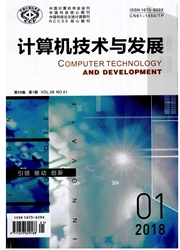

 中文摘要:
中文摘要:
机会路由实现了数据在有损无线链路中的高吞吐量传输。现有的机会路由协议--MORE,虽然是第一个将网络编码应用到机会路由中的,但是在选择候选转发节点集时,仅考虑节点间的链路质量,使得部分节点因为能量耗尽而过早死亡,影响了无线传感网的整体性。针对这一突出问题,提出了一种改进的基于MORE协议的机会路由算法,以均衡节点的能量消耗。根据机会路由的传输机制,综合考虑节点的期望传输次数(ETX)和剩余能量(RE),提出了一种新的路由测度期望生存时间(ELT)和基于它的候选转发节点集的选择策略。最后,基于NS2仿真平台进行仿真分析。仿真结果表明:在考虑节点剩余能量的基础上,改进MORE协议既保证了数据传输的可靠性,同时均衡了节点的能量消耗,提高了节点生存时间,延长了网络的生命周期。
 英文摘要:
英文摘要:
Opportunistic routing achieves high throughput in the face of lossy wireless links. The current opportunistic routing protocol, MORE,is the first opportunistic routing work to adopt network coding,but in the selection of candidate forward node set,it only considers the quality of the link between nodes, which leads to premature dead for some nodes because of energy depletion, affecting the integrity of wireless sensor networks. Aiming at this outstanding issue, an improved routing protocol based on MORE is proposed, which balances en- ergy consumption of wireless sensor nodes. According to transmission mechanism of opportunistic routing, considering the expected trans- mission count (ETX) and residual energy (RE) ,a new routing metric expected life time (ELT) and a selection strategy of candidate forward node set based on it is proposed. Finally, simulations are performed by NS2. The results show that in the basis of taking the resid- ual energy into account, the improved MORE protocol not only ensures the reliability of data transmission, but also balances the energy consumption of nodes,improving survival of nodes and prolonging the network life cycle.
 同期刊论文项目
同期刊论文项目
 同项目期刊论文
同项目期刊论文
 期刊信息
期刊信息
